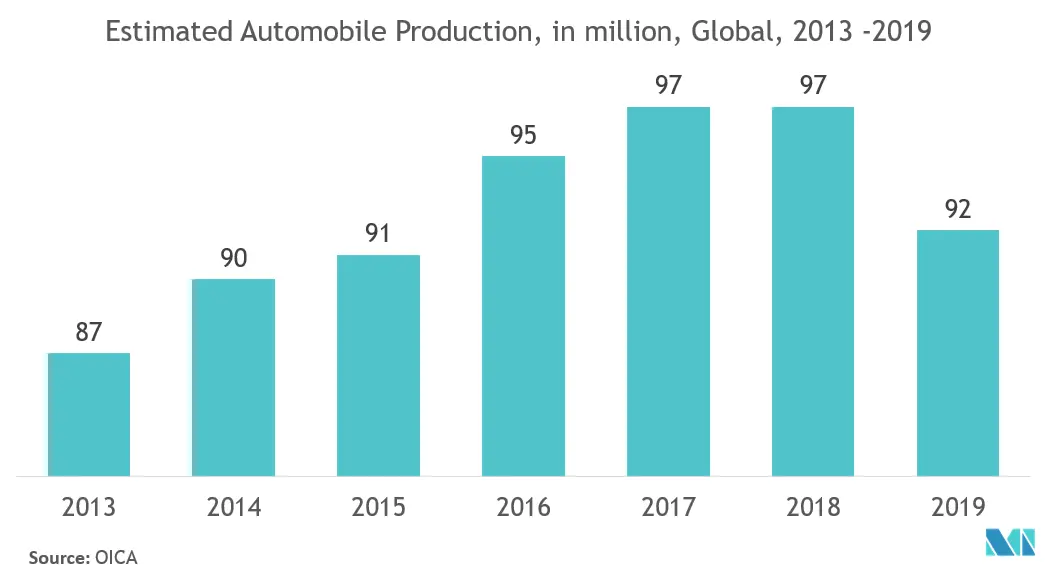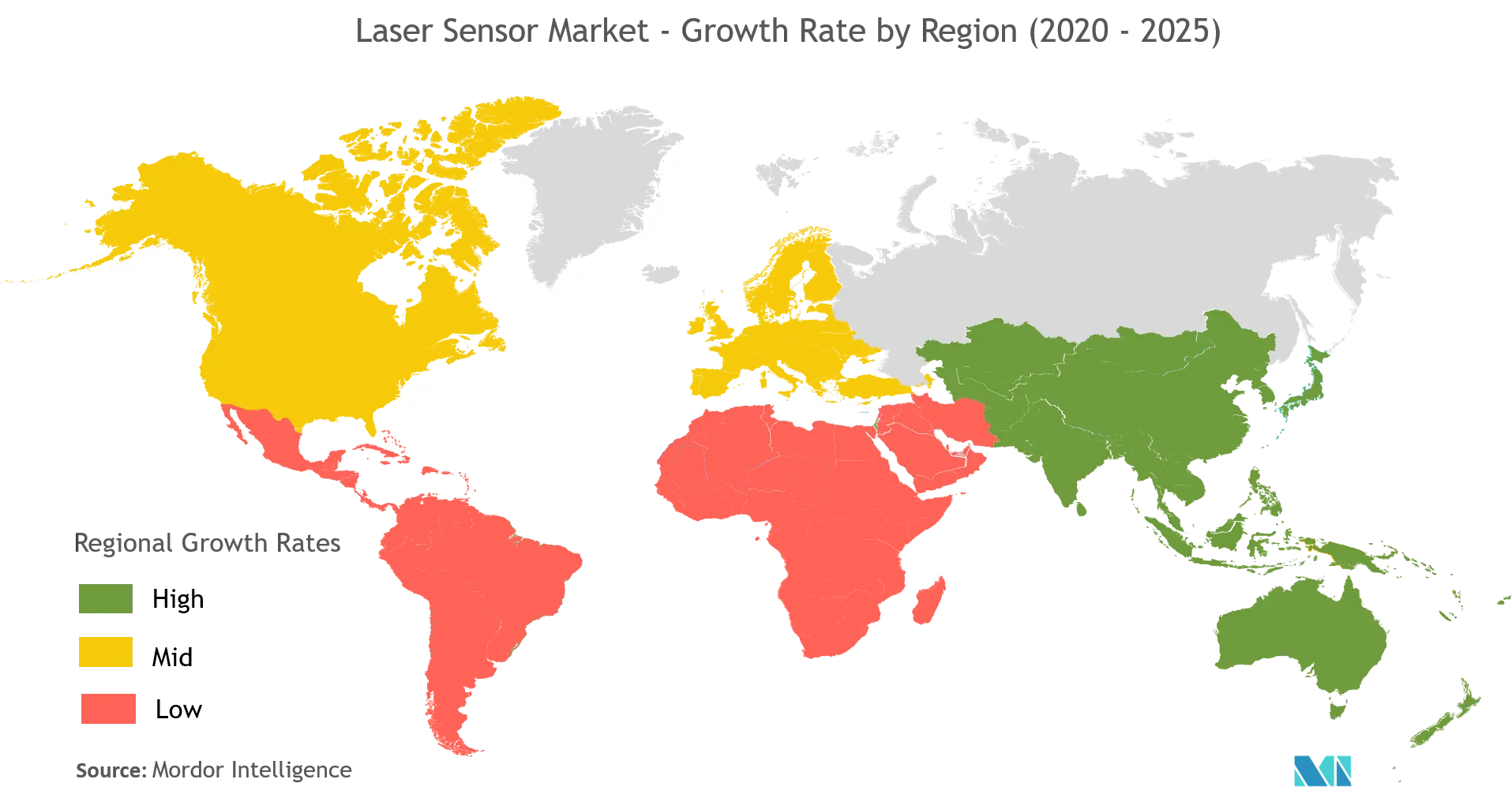Market Trends of Laser Sensor Industry
This section covers the major market trends shaping the Laser Sensor Market according to our research experts:
Automotive is Expected to Witness Significant Growth
- End-user industries such as automotive, are greatly benefiting from the advances in laser use, mostly with future sales of the autonomous vehicle. Autonomous cars use other sensors to see, notably radars and cameras, but laser vision is hard to match. Radars are reliable but do not offer the resolution needed to pick out things like arms and legs. Cameras deliver the detail but it requires adopting machine-learning-powered software such that it that can translate 2-D images into 3-D understanding. Lidar on the other hand offers hard, computer-friendly data in the form of exact measurements.
- In June 2020, Mouser has enhanced the lidar vision SPL S 1 L90 A and SPL S 4 L90 A lasers from Osram Opto Semiconductors. The high -power, infrared SMT components feature a 905 nm laser wavelength suitable for use in autonomous vehicles and other LiDAR applications. The lasers provide a typical output of 120 W at 40 A per channel, at up to 33 % efficiency. The lasers feature low thermal resistance, enabling heat to dissipate quickly from components even when operating at high currents.
- Further, currently, Livox Technology is bringing its Livox Tele -15 automotive lidar to the global market on a mass-producible scale. It is designed for advanced long-distance detection, where the Livox Tele -15 offers a durable, high precision system in a compact form. Now, objects with low reflectivity have an increased detection range of 60 % from 200 meters to 320 meters at 10 % reflectivity, and it will also detect objects at 500 m with 50 % reflectivity, previously requiring 80 % reflectivity at that distance.
- Apart from this, governments across the globe are also encouraging the deployment of ADAS features worldwide, which will drive the growth of the market. For instance, the US Department of Transportation’s National Highway Traffic Safety Administration (NHTSA) published the Federal Automated Vehicles Policy related to highly-automated vehicles (HAV), which range from vehicles with advanced driver-assistance systems features to autonomous vehicles.
- Additionally, in June 2020, Infowork announced that it would start developing the Frequency Modulated Continuous Wave (FMCW) technology, a sensor for self -driving vehicles, in collaboration with Hyundai Motors. The FMCW LiDAR under development is a sensor that measures the distance of an object with a laser and models its surroundings with precise 3D images.

North America is Expected to Witness Significant Growth
- The North American region is known to be the early adopters of new technology in manufacturing, design, and research in the laser sensor. The region's prominence drives the demand in exporting electronics equipment and growing end-user industries that are significant consumers of laser sensors such as defense, consumer electronics, etc.
- In military and protection, the Pentagon developed an infrared laser that can identify a person's unique cardiac signature up to 200 meters away. The laser prototype which is known as Jetson is used in the measurement of surface vibrations caused by the heartbeat at a distance. Under suitable conditions, the technology can achieve an identification 95 percent of the time.
- Moreover, the Department of Defense, at the request of United States special operations forces, used the principle, primarily to develop an infrared laser that can be used in the identification of enemy combatants from a significant distance by reading their cardiac signature. The laser is expected to penetrate clothing and achieve an identification roughly 95% of the time from up to 200 meters away.
- Further, in Oct 2019, the during the association of the United States Army's annual meeting, the defense giant L3Harris Technologies announced that the company got an order from the Army for 65 electro-optical sensor suite units, to mount on the service's latest Shadow drones. The drones are configured to fit on the Tactical Unmanned Air Systems Shadow UAV (RQ-7Bv2), the contract is for 65 WESCAM MX-10D electro-optical, infrared and laser designator sensor suites.
- Moreover, in the consumer electronic segment, smartphones, tablets, and AI-assisted electronics are experiencing high growth. This is expected to influence the growth of the laser sensor market in the country. According to the US Consumer Technology Sales and Forecast study, which was conducted by the Consumer Technology Association (CTA), the revenue generated by smartphones was valued at USD 79.1 billion and USD 77.5 billion in 2018 and 2019.

